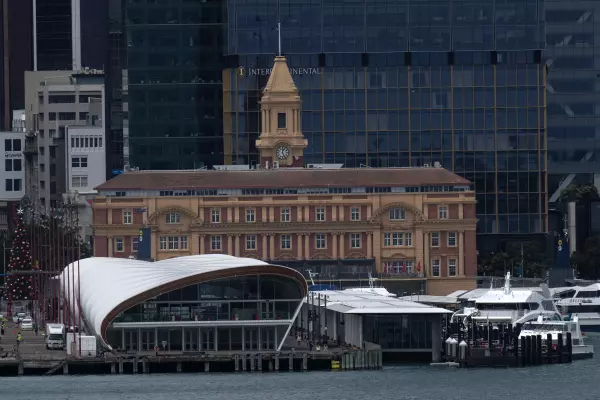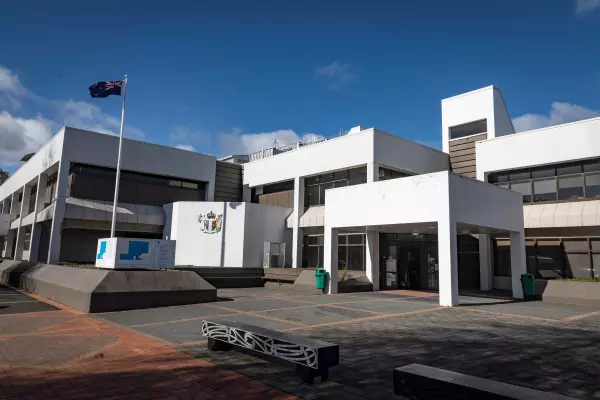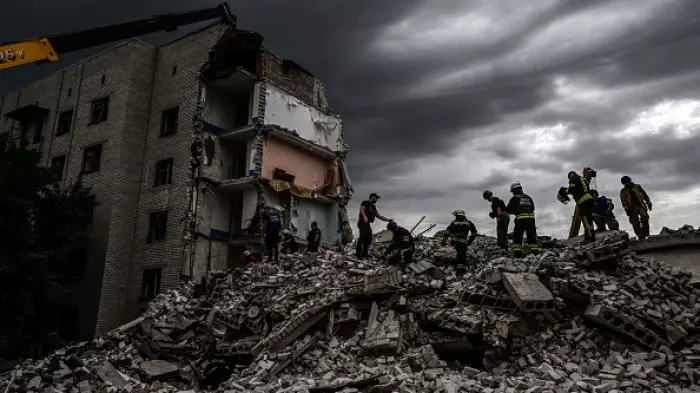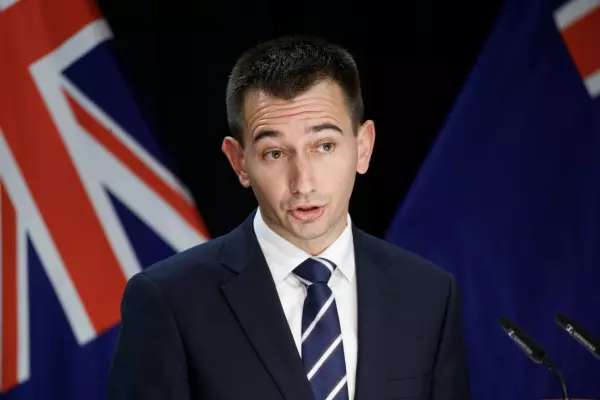New Zealand enjoys a socialised healthcare system, but there’s only so much money to go around. Charity hospitals and donors are plugging the gaps.
If Phil Bagshaw had his way, he’d be able to hang a ‘Closed, no longer needed’ sign in front of the Canterbury Charity Hospital with an arrow pointing people to the public hospital down the road.
But with the public system buckling and increasing numbers of people unable to access care, he concedes that’s not likely to happen.
Instead, the charity hospital, a collection of retrofitted residential buildings in northwest Christchurch, is slowly expanding.
Staffed by almost 300 volunteers – everyone from surgeons and dentists to gardeners and cleaners – the hospital provides free care to people who would otherwise go without it.
NZ prides itself on having free hospital-level healthcare, a legacy that goes back to Michael Joseph Savage and the 1938 passage of the world-leading Social Security Act. But the idea of universal access is a myth, Bagshaw says.
Tens of thousands of New Zealanders are stuck on waitlists for elective surgery if they get on at all. Care is rationed, surgeries are being deferred and there are severe staff and infrastructure challenges.
How would Savage feel about all this? I ask.
“I think he’d be absolutely bawling his eyes out,” Bagshaw says.
“I truly believe that it is a government duty to provide health and education to all its citizens. In a democratic society, they should be basic rights.”
Diminished quality of health
Instead, Bagshaw believes too many people are falling through the gaps: unable to meet the threshold for access to public healthcare and unable to afford to go private.
What that means in real terms is people with a diminished quality of life might have, for example, rotten teeth, untreated hernias, or unexplained rectal bleeding that may, or may not, be cancer.
That’s where the charity hospital comes in. Bagshaw co-founded the Canterbury Charity Hospital Trust in 2004.
The previous year he had attended a talk in Australia in his role as NZ chair of the Royal Australasian College of Surgeons when the speaker, who was talking about staffing shortages, said: “It’s going downhill and if we don’t stop it there’ll be charity hospitals all over the place.”
The remark resonated.
A surgeon at Christchurch Hospital, Bagshaw had spent more than a decade railing against health system reforms he and his colleagues viewed as managerialism that was undermining patient care. It wasn’t working, so they decided to take action.
In 2005, the trust bought an old family villa in Bishopdale. Today, the hospital covers three buildings and a further two are being added. It has two operating theatres, dental and endoscopy facilities and private rooms for counselling.
All of this has been funded by charitable donations, fundraising and bequests.
Outputs
According to its most recent annual return, for the year to June 2021, the trust received $1.2 million in donations and fundraising.
Among its outputs, the hospital provided 5,165 counselling sessions (including 999 sessions in the six months following the March 15 terror attacks), 3,615 dental interventions, 1,685 general surgery procedures and 1,615 endoscopy sessions between 2005 and 2020, according to a paper in the NZ Medical Journal.
Bagshaw says the medical professionals who volunteer their time at the charity hospital do so because they feel they have an obligation to provide as much healthcare as possible.
“We’re not there to say no to people,” he says.
The journal article about the charity hospital makes a case for governments to invest more in health, arguing it’s economically advantageous to do so, in that people are able to stay at work or out of care for longer.
“If they do not do so, the likely long-term consequence will be a charity hospital in every town,” it warns.
Philanthropic donors and altruistic medical staff are already covering the cost of providing care the public system isn’t able to address.
Since the Canterbury charity hospital was set up, similar organisations have been established in Auckland and Southland.
Bagshaw also recently helped found a national body, the Association of Charity Hospitals of Aotearoa NZ.
“People do say ‘Oh you’re letting the public system off’,” the 73-year-old says.
“But I think we do two things. We provide a service to as many people as we can who would otherwise go without, but we make the point that there’s unmet need as well.”
Helipads and hospitals: the big donors
Donors aren’t just funding alternatives to the public healthcare system, however, they’re also directly funding critical infrastructure and equipment.
At an event in Wellington recently, commercial property developer and philanthropist Mark Dunajtschik confirmed he would provide up to $50m for a replacement mental health unit in the Hutt Valley, to be called the Mark Dunajtschik Mental Health Centre.
The government had already announced $30m to replace the existing, run-down unit, Te Whare Ahuru. However, health minister Andrew Little said the donation from Dunajtschik meant the unit could be expanded to 34 beds, and government funds could be reallocated towards other mental health projects.
Dunajtschik had previously provided more than $50m to build a new children’s hospital in the capital.
The 86-year-old is by far the biggest single donor to health infrastructure in NZ. However, he’s not alone.
Before they were disestablished and replaced by the new national health service, Te Whatu Ora, or Health NZ, BusinessDesk used the Official Information Act (OIA) to get details of all cash and non-cash donations and bequests made to the 20 district health boards (DHBs).
Between 2016 and 2017, and 2020 and 21, the DHBs collectively received donations worth about $115m. This includes pandemic-related supplies and equipment from the Ministry of Health, which some health boards recorded as donations. Others didn’t.
It excludes the more than $50m provided by Dunajtschik for the children’s hospital, as this was received after the OIA request period.
Most funds and equipment were donated by foundations associated with DHBs like the Starship Foundation in Auckland, the Wellington Hospital Foundation and Māia Health Foundation in Christchurch.
Examples of significant donations include $1m from Māia to ensure the new Christchurch Hospital building, Waipapa, was built with a rooftop helipad, $1m from the Wellington Hospital Foundation for new MRI scanners, and $1.7m from Churchill Trust to help fund the development of a new post-anaesthetic care unit at Wairau Hospital.
The role philanthropic donations should play in a publicly-funded health system is a vexing question.
The donors are undoubtedly generous, but shouldn’t the government be funding critical infrastructure? And if it can’t, shouldn’t that trigger a wider debate around taxation?
Last Friday, the inaugural chair of Health NZ, Rob Campbell, gave a speech to Taranaki business leaders in which he outlined systemic issues facing the system and urged people to engage constructively to help the new model succeed.
“Our health system has been broken down and hollowed out by many years of underinvestment but also with poorly structured and confused and confusing processes,” he said.
Later in the speech, Campbell asked his audience to consider donating to the Taranaki Health Foundation instead of writing letters to the editor or complaining when they heard about local health issues.
“Be a supporter. Be a better person for it. Be part of the solution,” he said.
The state provides, within limits
In an interview with BusinessDesk, the health minister, who was at home recovering from covid-19, says he neither wants to encourage nor discourage philanthropic contributions to health.
“I take the view that it is the responsibility of government to make sure decent quality health services are available to everybody – to provide healthcare for everybody in the community,” Little says.
“I would certainly never say no to somebody who feels generous enough to give, but I would never want to build a health system that becomes dependent on that level of charitable giving.”
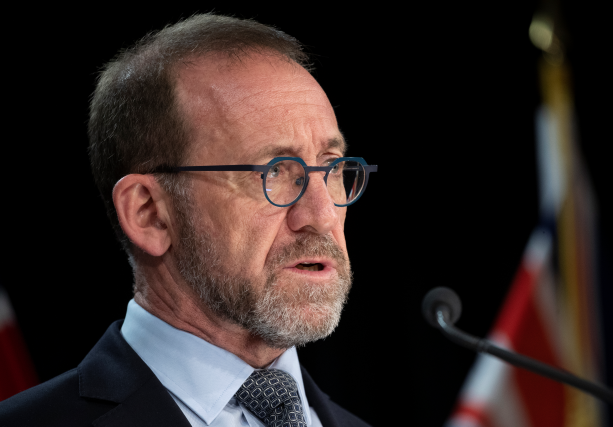 Health minister Andrew Little (Image: NZME).
Health minister Andrew Little (Image: NZME).In his view, foundations like Māia provide an avenue for people, particularly people who have had positive experiences with the health system, to give back if they want to.
However, Little doesn’t believe they should have to fund critical infrastructure like the helipad. The decision not to include it in the new hospital build was made before Labour took office.
“I think the benefit of the foundations and what-have-you is they enable some of the extra stuff, the stuff that, were the public dollar to be greater it could be provided but it isn’t necessary for good quality healthcare,” he says.
The sizable donations made by Dunajtschik are clearly an exception.
Health accounts for roughly $1 of every $5 in government spending, Little points out. But even so, there are limits on what can be funded, he says – the health system is unlikely to ever meet all the demands placed on it.
“We don’t like using the language of health rationing, but the reality is when you do have limits you end up making decisions and choices about where the funding should go.”
The minister rejects a question suggesting the rise of charity hospitals is a sad reflection on the public system.
'Is it a crisis?'
Instead, he takes the opportunity to talk about changes in the health system and how, even in the past few decades, new technologies and treatments have resulted in enhanced care for people with diseases like cancer, and how more people are being treated.
Essentially, public expectations have changed.
Demand for health services would have still been high under the first Labour government, Little says, but Savage and co weren’t operating in a period where there were MRIs or other forms of modern and expensive medicine.
Little recognises frontline health workers have valid concerns and issues with the way some things are being run – which he believes Health NZ will help address – but says that from a systems perspective, the health system is still delivering enormous benefits to people every day.
“The question I’m constantly faced with is ‘is it in crisis?’,” he says.
“Well, I look at the system as a whole. I think the system is under huge pressure, but the system is delivering in so many different ways, every day, for so many people.”
Little acknowledges, though, that he’s received correspondence from GPs saying they’re no longer bothering to refer their patients to specialists because they know they won’t be seen. This is unfortunate, he says, as the government would rather know the scale of the problem.
Earlier this year, the minister set up a task force to come up with a plan to deal with the surgical backlog. It is a problem, he says.
However, he says current pressures need to be seen in the context of the biggest health response in a generation.
“It is one of the things that keeps me awake at night is knowing there is this big backlog of unmet specialist need at the moment.”







